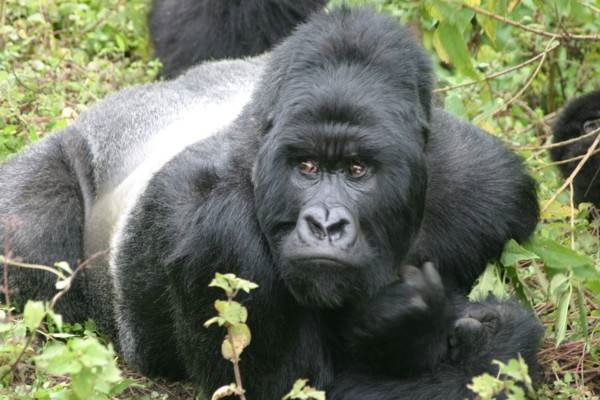Decode the gorilla genome
Cambridge researchers have deciphered the genetic code of a gorilla called Kamilah. Research shows that the human genome is similar to the gorilla genome. The team hopes to discover genetic mutations that lead to the formation and development of culture, language and science. The study results are published in the journal Nature.
>>>Wild gorillas can also eat raw meat

Many human genes resemble gorilla genes
The DNA sequence of humans, chimpanzees and orangutans has now been published. The initial comparison confirms that chimpanzees are the closest relative of humans with 99% of homologous DNA. Followed by gorillas with 98% and orangutans ranked third with 97%. That reflects the evolutionary history of monkeys. Comparing the genome shows that humans separated from orangutans 14 million years ago, gorillas 10 million years ago and chimpanzees 6 million years ago. Although closest to genetic chimpanzees, many human genes resemble gorilla genes, one of which has a gene that allows humans and gorillas to sound better than other monkeys. This denies the hypothesis that hearing development allows people to develop language. Medical researchers are also interested in a mutation that causes dementia in humans, but it seems that gorillas are completely unaffected.
Comparative research will also shed more light on the evolution of all the great monkeys, but the biggest question is when the first genes make human beings capable of abstract thinking appear. Homo sapiens appear about 200,000 years ago, but the human brain only started to develop a difference about 50,000 years ago. At that time, mankind was one of the few monkey species in Africa that could have a life not so different from a gorilla. Therefore, the assumption is that there was something that happened very quickly during this time which led to the emergence of abstract thinking, allowing people to invent advanced tools and use them.
The genome sequence of all large monkeys will help scientists answer what happened in the past 200,000 years to allow humans to evolve today.
- Gorilla hugged each other to rejoice
- Baby gorilla in the mother's arms
- Decode the smallest bacterial genome
- Newborn gorillas in mother's arms
- Strange gorillas come back like people
- Albino gorilla is a product of incest
- Congo established gorilla sanctuary
- Scientists successfully decode the spider's genome
- Information about animals has a human-like genome that is over 98%
- The gorilla knows 'more than 1,000 words of language' died at the age of 46
- Gorilla has the ability to use the tool
- Successfully decode the genome of soybeans
 Animal 'suffering' after hibernation
Animal 'suffering' after hibernation Why do goats climb well?
Why do goats climb well? Scientists were surprised to see chimpanzees eating turtles
Scientists were surprised to see chimpanzees eating turtles Giant catfish died deadly due to drought in Thailand
Giant catfish died deadly due to drought in Thailand World's most powerful telescope captures something that threatens to upend cosmology
World's most powerful telescope captures something that threatens to upend cosmology  'Time-traveling assassin' 13 billion years ago kills an entire galaxy
'Time-traveling assassin' 13 billion years ago kills an entire galaxy  The mystery of human lifespan limits
The mystery of human lifespan limits  13 'alien' skulls next to Mayan pyramids
13 'alien' skulls next to Mayan pyramids  How long does it take to reach another star system besides the Solar System?
How long does it take to reach another star system besides the Solar System?  For the first time, 5 super-objects from 13.6 billion years ago have been revealed.
For the first time, 5 super-objects from 13.6 billion years ago have been revealed. 